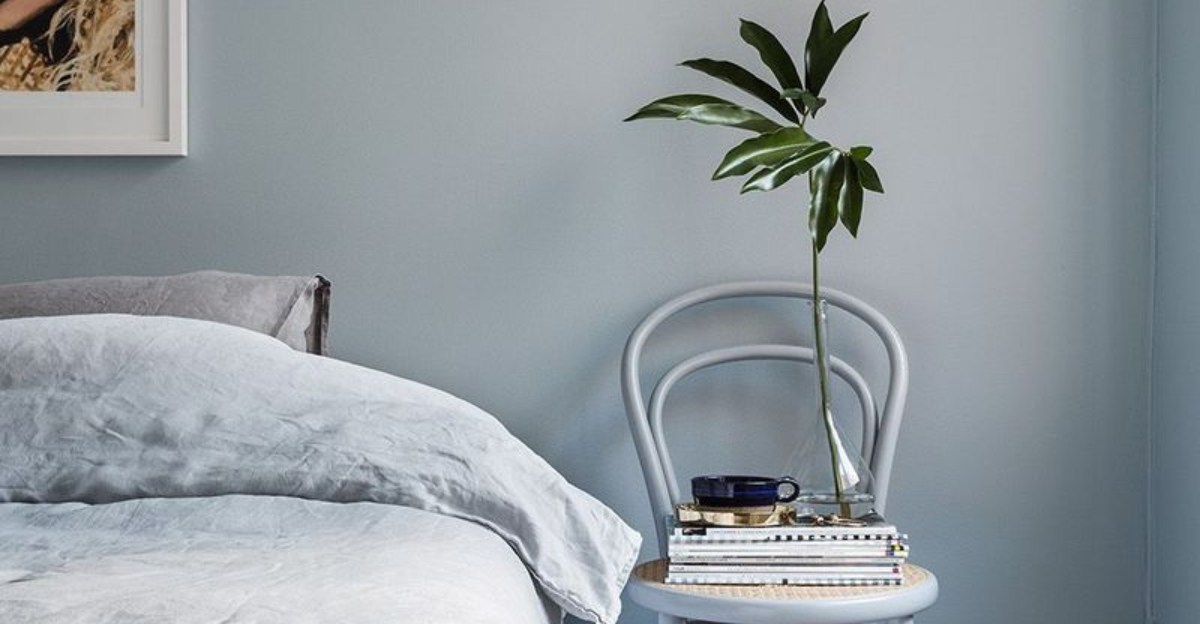Choosing the right color for your bedroom can transform not just how the space looks, but how you feel in it. Professional interior designers know which shades promote relaxation, create visual harmony, and enhance sleep quality.
I’ve gathered 10 designer-recommended bedroom colors plus 5 all-time favorites that could inspire your next bedroom makeover.
1. Soft Gray
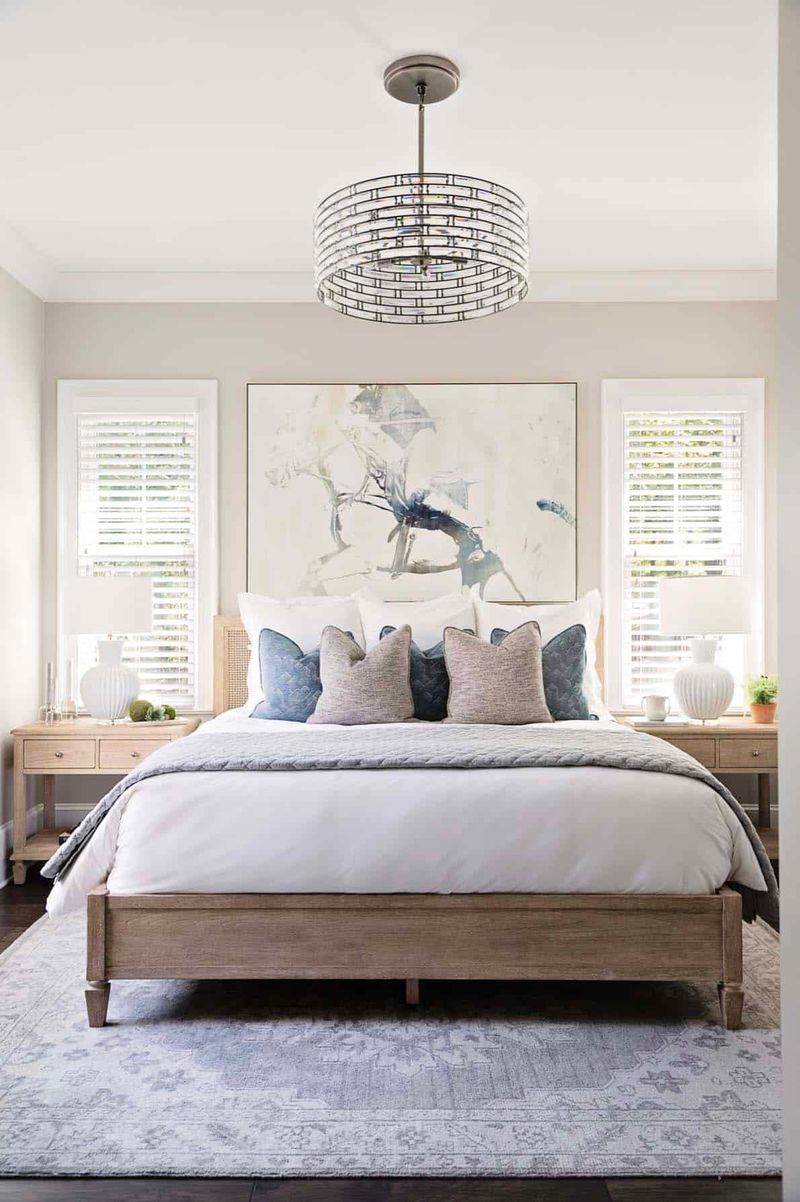
Picture wrapping yourself in a cozy blanket on a rainy day – that’s the feeling soft gray brings to bedrooms. Professional designers love how this versatile neutral plays well with virtually any accent color.
Gray creates a sophisticated backdrop without overwhelming the senses, perfect for promoting restful sleep. Add texture through bedding and curtains to prevent the space from feeling flat.
2. Warm Beige
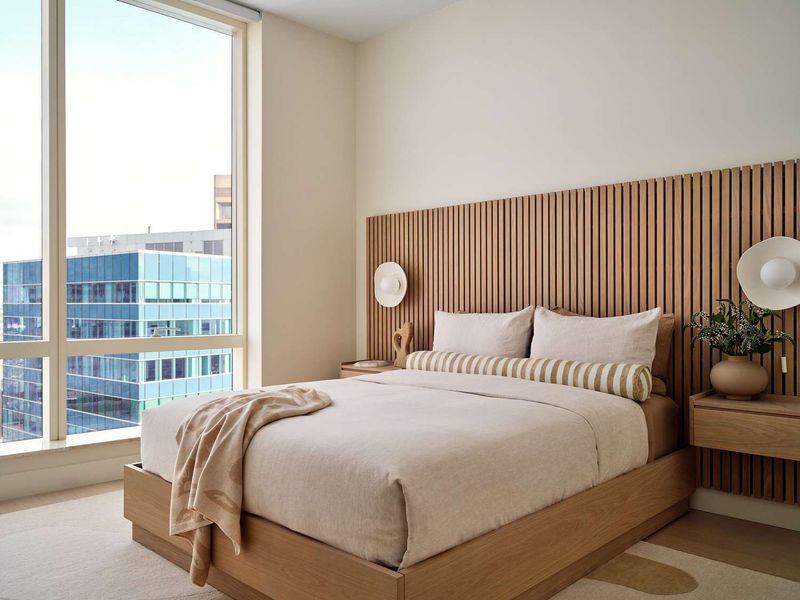
Walking into a warm beige bedroom feels like receiving a gentle hug. Beige adds coziness without sacrificing that clean, timeless appeal many homeowners crave.
This shade works especially well in smaller bedrooms, visually expanding the space. Natural wood tones and soft textiles help the room radiate peaceful, earthy comfort.
3. Muted Blue
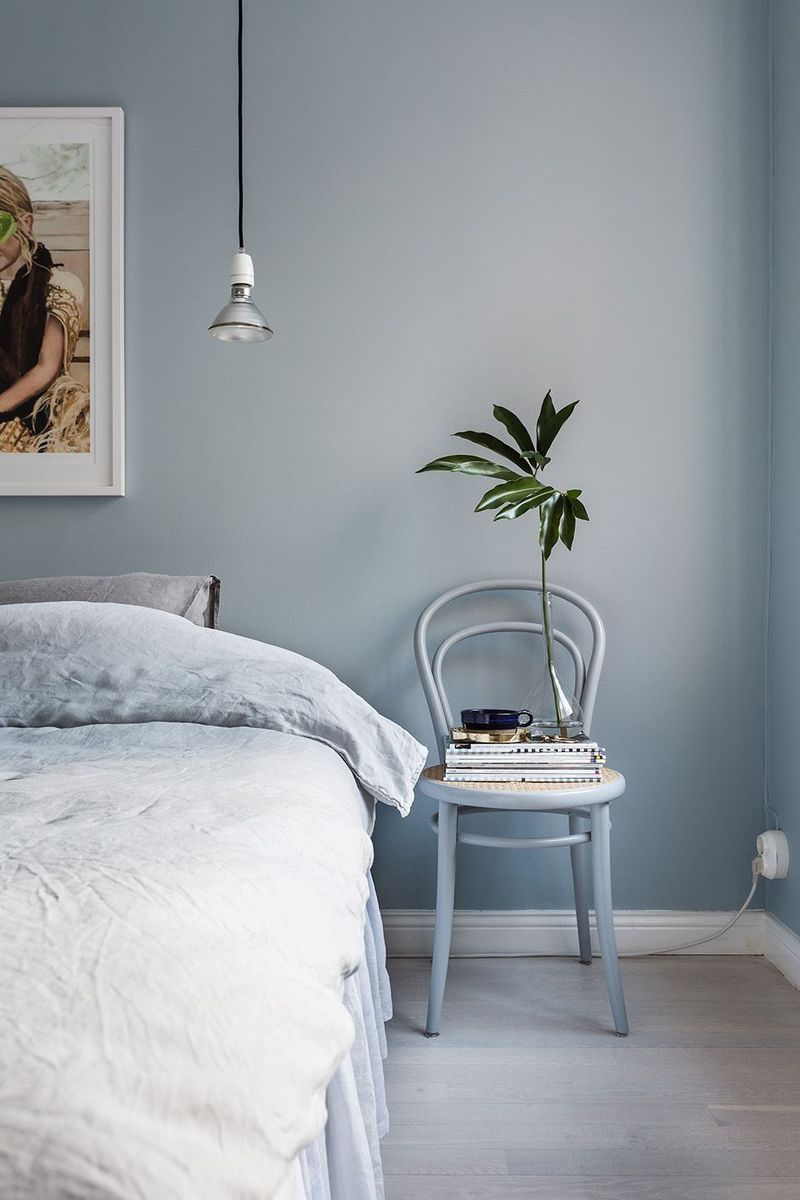
Scientific studies consistently show blue lowers blood pressure and heart rate – exactly what we need for better sleep.
Muted blue shades evoke clear skies and calm waters, subconsciously signaling your brain to relax. Layer in creamy whites and soft textures for a bedroom that feels like a peaceful escape from the chaos of daily life.
4. Sage Green
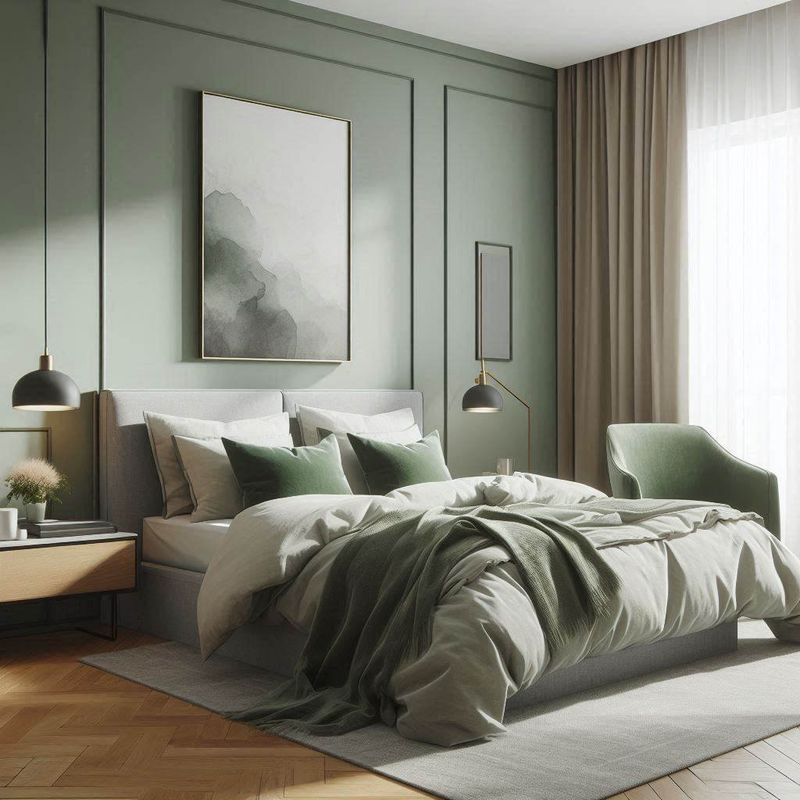
Bringing the healing power of nature indoors, sage green creates a sanctuary-like atmosphere that designers adore. Subtle yet distinctive, this muted green strikes the perfect balance between character and neutrality.
Sage particularly shines in bedrooms with plenty of natural light, where it shifts beautifully throughout the day. Combine with natural linens, rattan accents, and botanical elements for a refreshing retreat.
5. Classic White
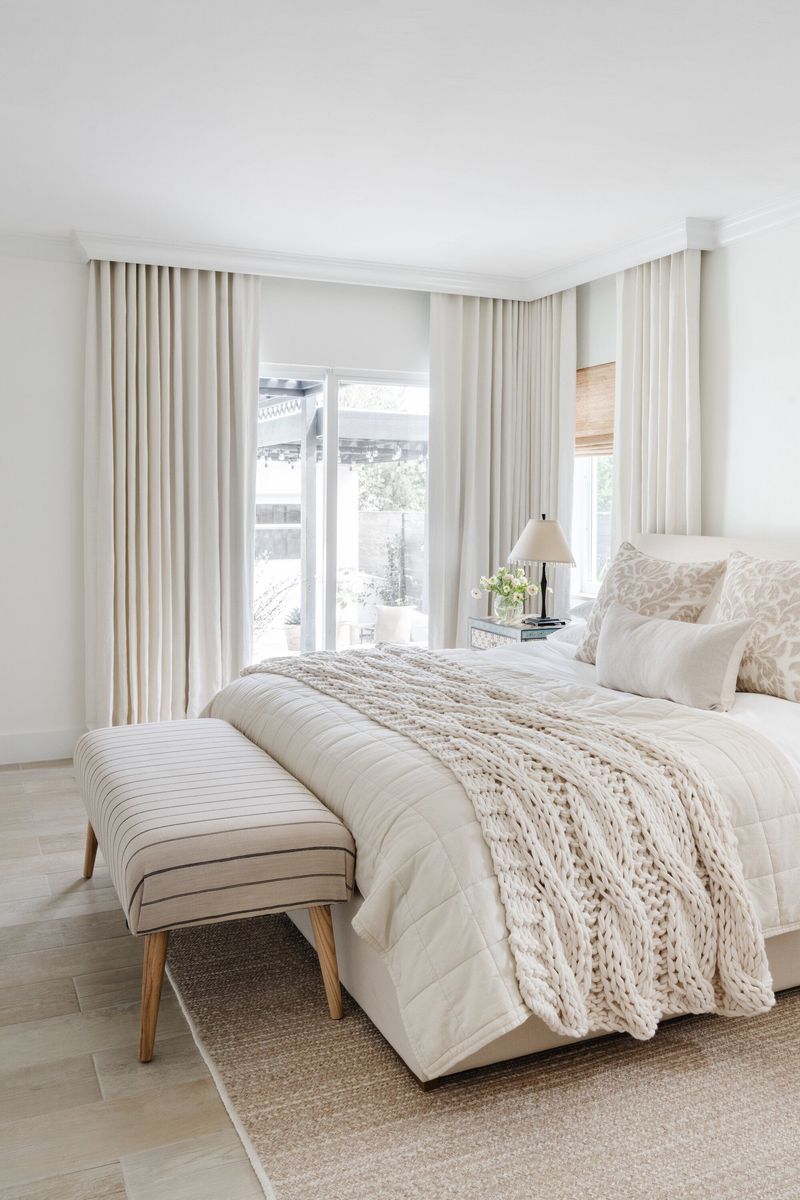
Far from boring, classic white creates a canvas where texture and form take center stage. Experts love how white walls make artwork pop and allow architectural details to shine.
White comes in countless variations – from warm alabaster to cool crisp shades. Select creamy versions for coziness or blue-whites for a more contemporary feel in your sleep sanctuary.
6. Blush Pink
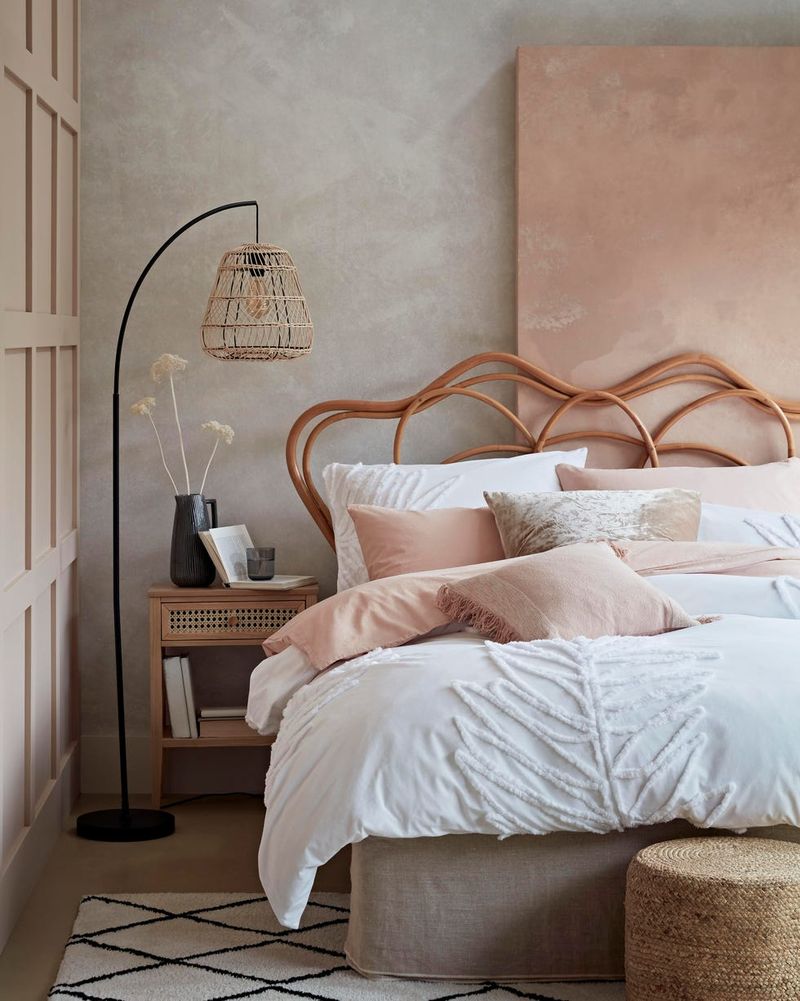
Gentle blush pink has shed its exclusively feminine associations to become a sophisticated neutral that flatters all skin tones. This subtle hue creates a warm glow, especially in spaces with northern exposure.
When selecting blush, aim for muted versions with gray undertones rather than candy-bright pinks. Brass accents and velvet textures lend a luxuriously calm feel to the bedroom.
7. Deep Navy
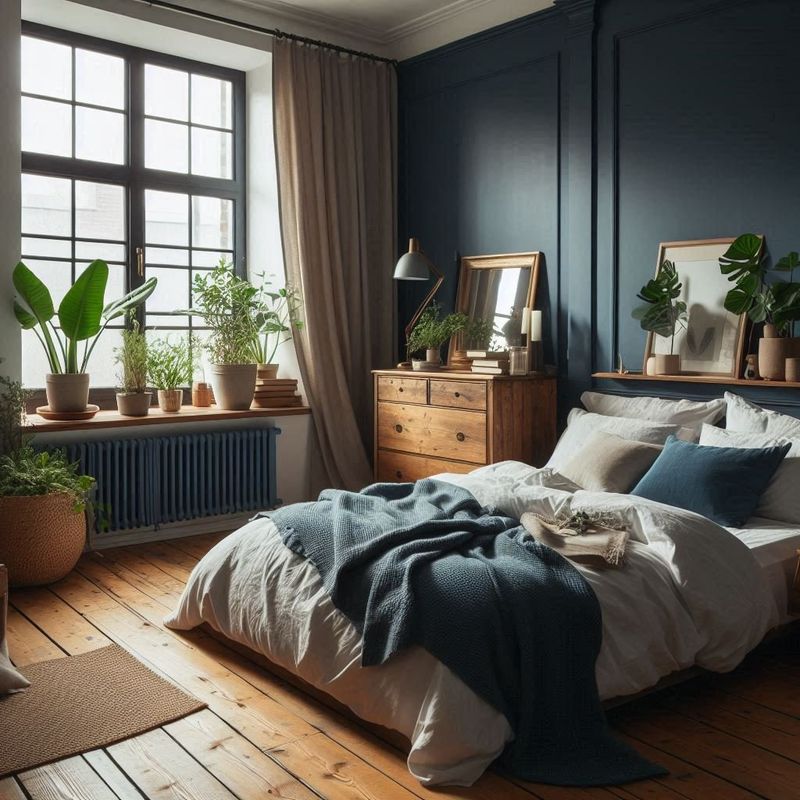
Bold yet timeless, deep navy creates a cocooning effect that designers recommend for bedrooms where deep sleep is a priority. Dark walls actually recede visually, making the space feel larger and more intimate simultaneously.
Navy works beautifully in both traditional and contemporary settings. Balance this rich hue with light bedding, mirrors, and metallic accents to prevent the room from feeling too heavy or closed-in.
8. Charcoal
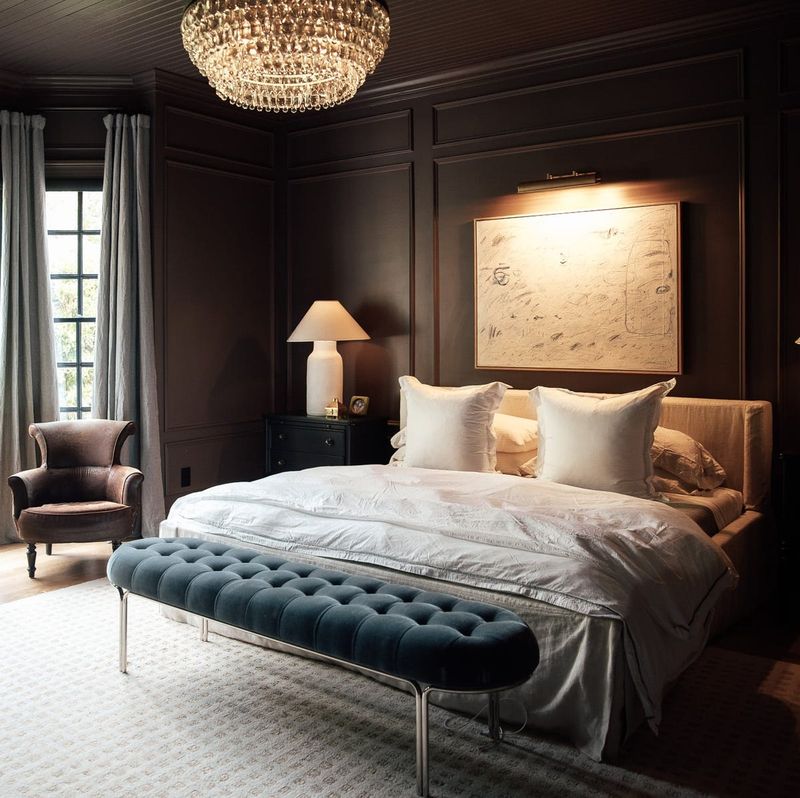
Daring yet sophisticated, charcoal creates dramatic backdrops that designers suggest for bedrooms needing character and depth.
Darker than mid-tone grays, charcoal still offers the versatility of a neutral while adding unmistakable presence. Brighten with contrasting white trim, light bedding, and strategic lighting for balance.
9. Lavender
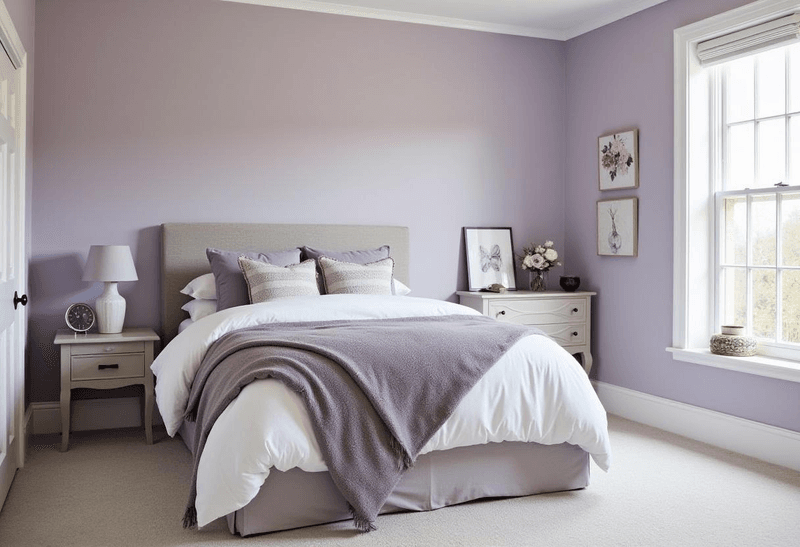
Whisper-soft lavender brings unexpected tranquility to bedrooms without veering into overly feminine territory. Scientific research suggests purple tones can reduce stress and promote quality sleep.
Lavender particularly complements silver accents and cool grays, creating a bedroom palette that feels both fresh and timeless throughout changing seasons.
10. Taupe
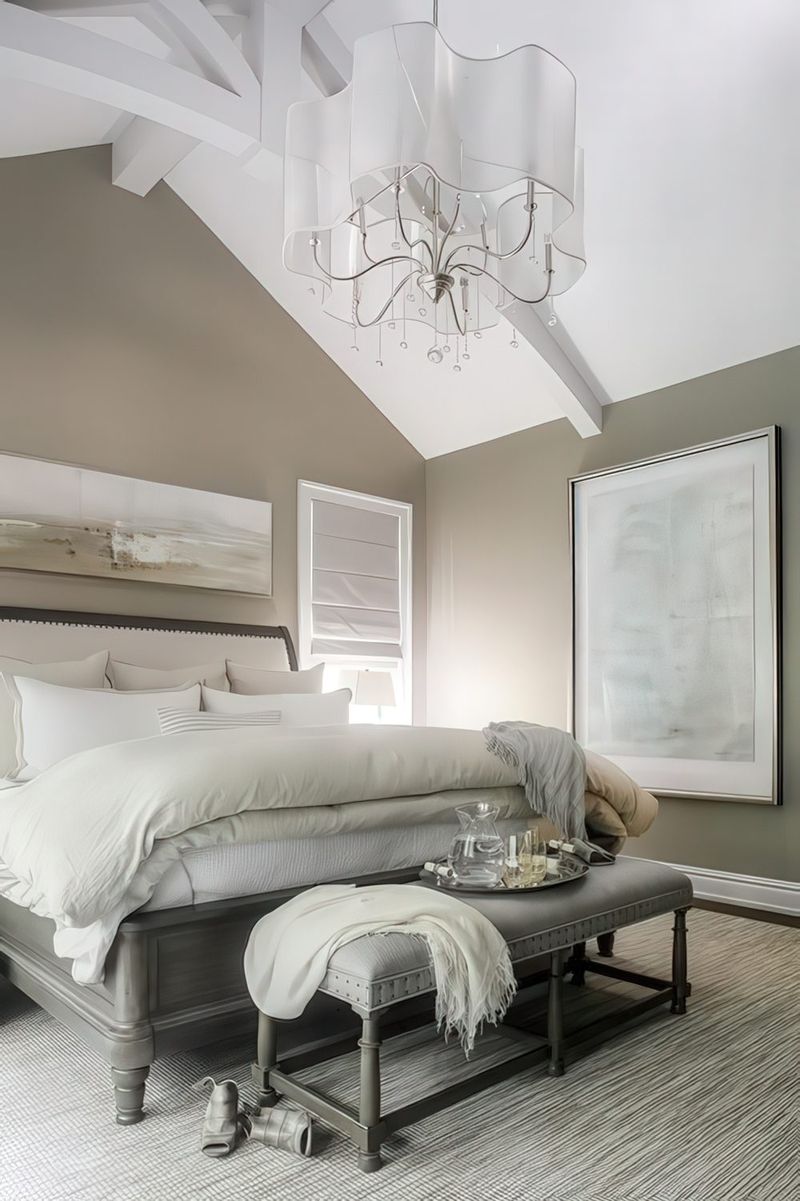
Sophisticated taupe sits perfectly between gray and beige, offering the best qualities of both beloved neutrals. Professionals recommend this chameleon-like color for its remarkable ability to shift appearance based on lighting and surrounding colors.
Warmer than gray yet more modern than beige, taupe creates serene backdrops that never feel dated. Varied textures—linen, wool, velvet—add dimension to this subtle, sleep-inducing shade.
11. Terracotta
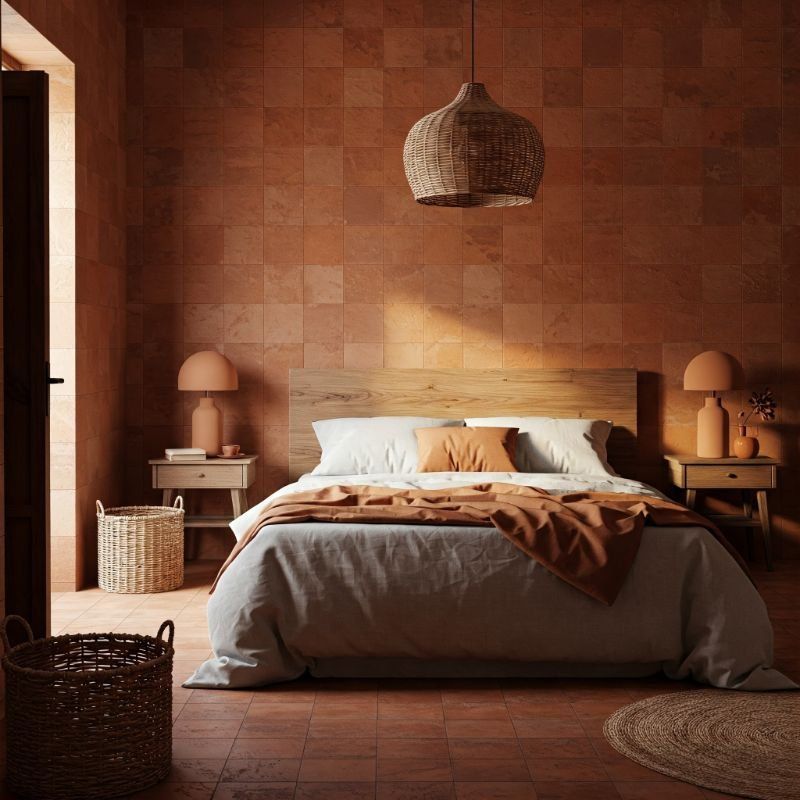
Earthy and grounding, terracotta brings unexpected warmth that designers secretly adore for bedroom spaces. Inspired by Mediterranean architecture and desert landscapes, this rich clay tone creates instant coziness.
Terracotta boasts historical staying power. Crisp whites, natural textures, and minimal patterns create a bedroom feeling both current and timelessly connected to the natural world.
12. Mustard Yellow
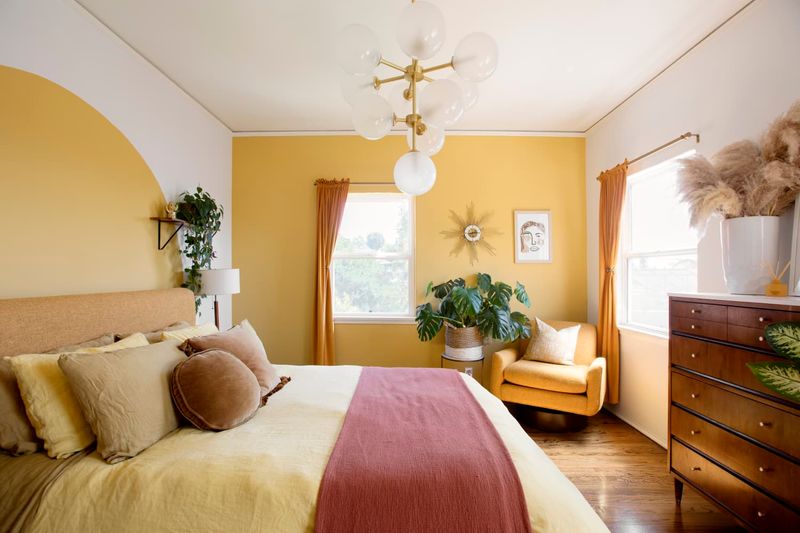
Surprisingly versatile, mustard yellow injects personality while maintaining enough sophistication for restful spaces.
Mustard acts as a sophisticated neutral when muted slightly with gray undertones. Balance with plenty of whites and natural materials to prevent overwhelming the senses in your sleep sanctuary.
13. Soft Coral
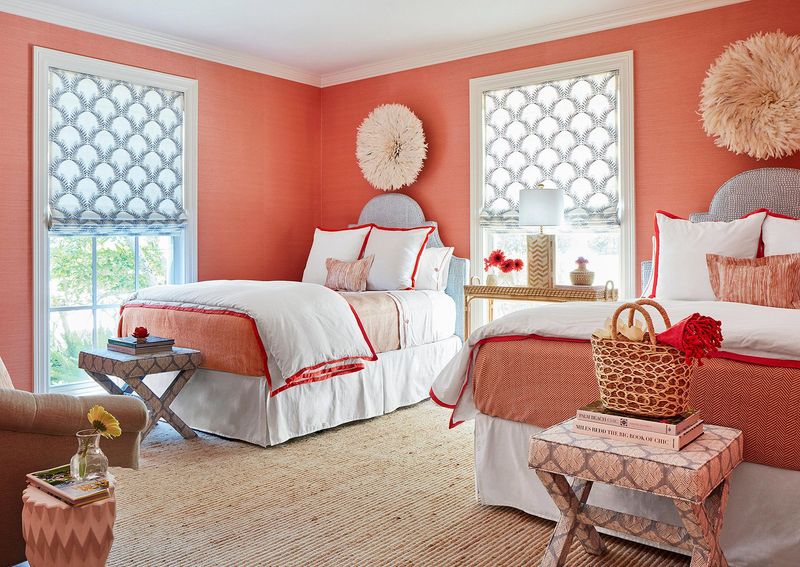
Reminiscent of perfect sunsets, soft coral creates a flattering glow that interior designers treasure for bedroom spaces. Less expected than pink yet equally soothing, coral adds personality without sacrificing restfulness.
When selecting coral paint, look for muted versions with plenty of white mixed in. Pair with natural linens, rattan elements, and minimal pattern for a bedroom that feels like a perpetual vacation retreat.
14. Forest Green
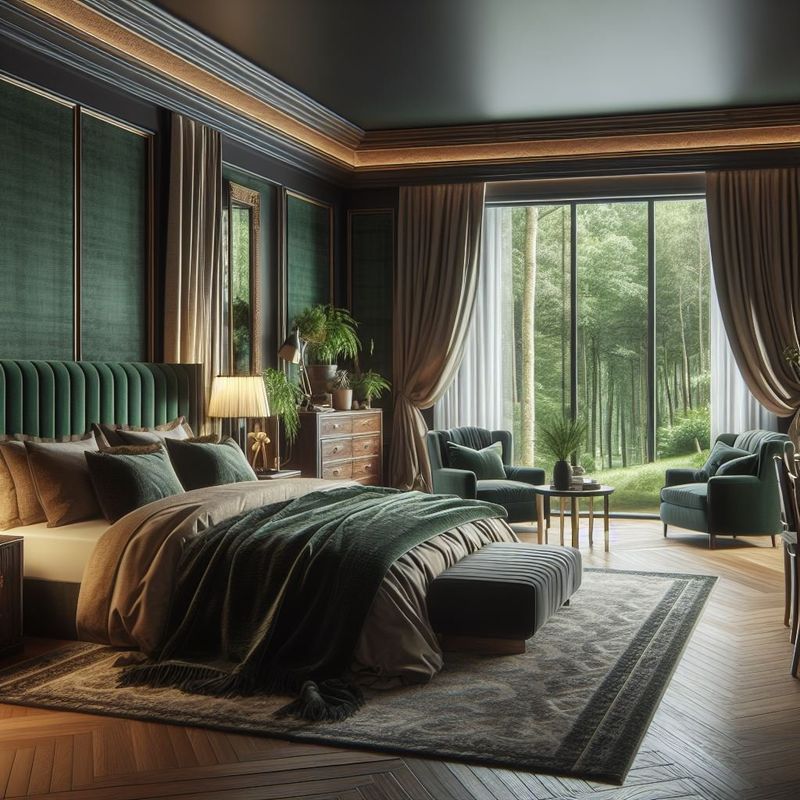
Rich and enveloping, forest green creates a biophilic connection that designers increasingly recommend for sleep spaces. Deeper than sage yet still rooted in nature, this verdant hue promotes feelings of stability and renewal.
Contrary to common concerns, dark greens actually make bedrooms feel larger by blurring boundaries between walls. Light woods, brass accents, and crisp whites keep the space from feeling too heavy.
15. Dusty Blue
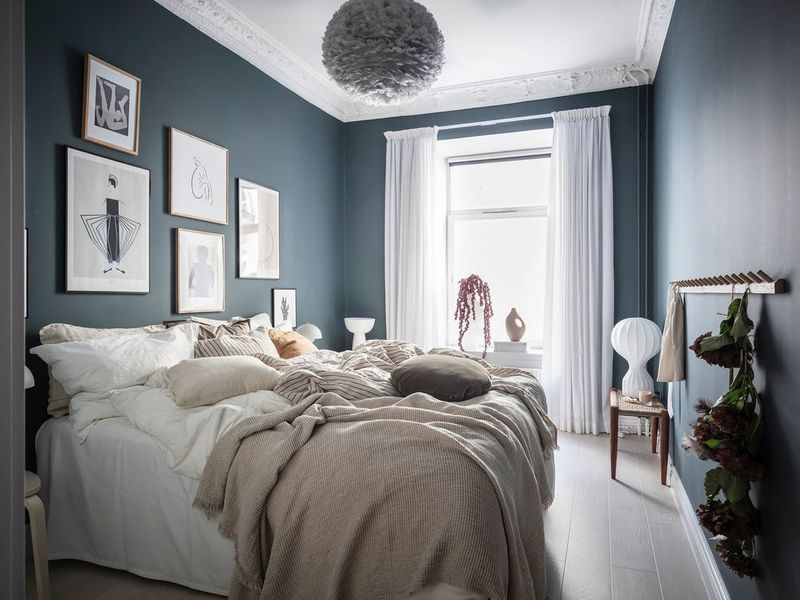
Evoking misty mornings and faded denim, dusty blue creates instant atmosphere that designers count among their secret weapons. More complex than standard blue, this grayish version brings subtle depth to bedroom walls.
What makes dusty blue special is its chameleon-like quality, shifting between blue and gray depending on lighting.

